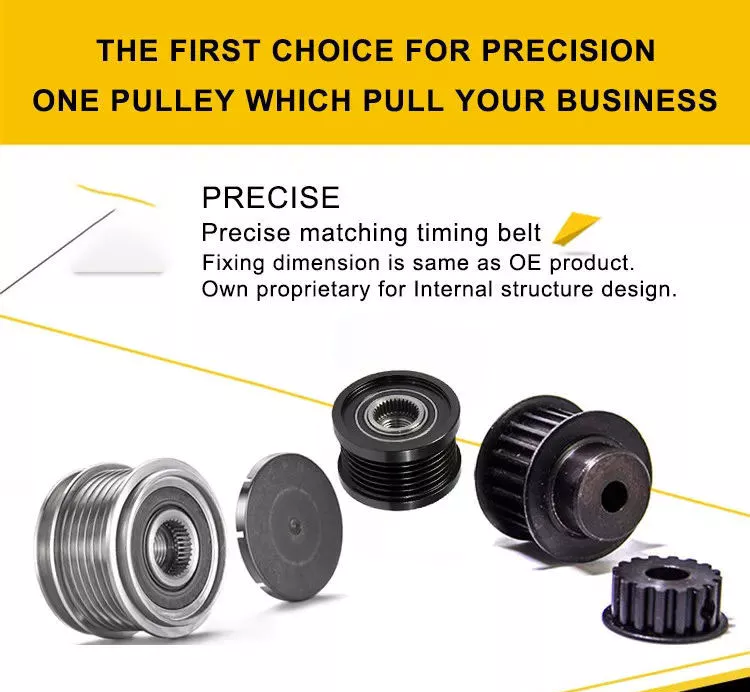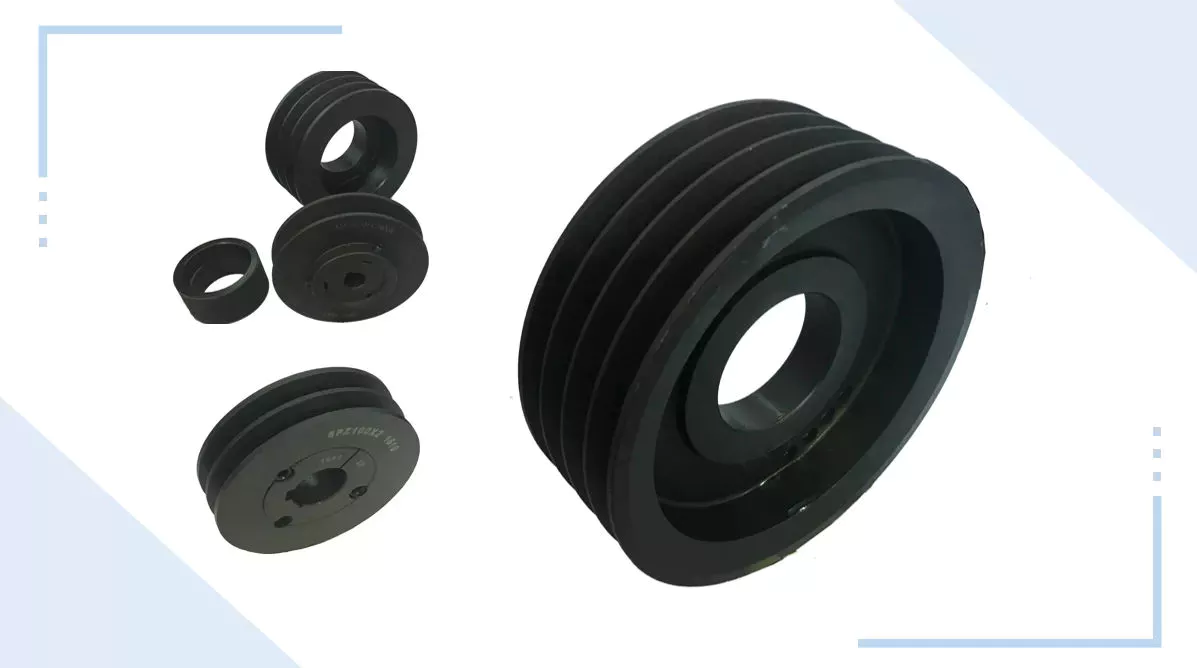Productomschrijving
Snatch Block / Snatch Pulley Block With Hook or Eye
1. Material lifting equipment
2. High quality drop forged steel
3. Safety factor of snatch block: 4: 1
4. Hook (hs type) or eye (es type)
5. Capacity of snatch block: 0.5t~10t
6. Optional: Single wheel or double wheel
7. Sheave diameter: 75-350mm
8. Wire rope diameter: 8-28mm
9. Popular in Europe, Middle-East, North America, South America, & etc
Features of Snatch Block:
1. Durable powder coat finish
2. Heavy-duty permits to perform under extreme condition.
3. Rated loads is from 2MT to 50MT.
4. Safety factor: 4 times.
5.200% over load capacity test 1 by 1 before package.
6. Manufactured according to ISO9001 quality standard
7. CE and GS approved.
All our activities are accredited to ISO 9001 and based on delivering the highest quality possible, both in products and services, ensuring long-term benefits and optimum performance. Also we got the below certification: CE GS SUV, LR ABS ( anchors and anchor chains) Our rigging hardware is manufactured under exceptional quantity control and strictly adhered to the US, DIN, JIS, BS and AS standards.
About sample:
Cost with free If the quantity small, and the express charge account into buyer's, after receiving the official order, the seller deducts it in first order's
Please do not hesitate to contact us, should there be any questions or enquires.
—————-FAQ————–
Q1: Does your workshop have products in stock?
A1: Yes, we have. But we only have standard-sized products; if you need customized products, it will take some time to manufacture them.
Q2: Whether you can offer customized service?
A2: Yes, the working condition of every customer is different. All of our products can be customized depending on customers' requirements. Please give us the information as straightforward as you can, so we can provide our best design to suit your demands.
Q3: How to confirm the working class of the crane?
A3: Please offer us the working environment, working duration, and frequency of the crane, and our engineer shall calculate it for you.
Q4: What kind of package for the hoist?
A4: Hoists and Electricals packed in wooden fumigation box. The main beams are covered by woven plastic cloth.
Q5: What kind of assistance can you offer with equipment installation?
A5: We have a professional installation team who has gone to many countries to assist with the installation. If you need us to send a technician to your factory, please let us know.
Q6: What payment terms can you accept?
A6: Our also supports L/C, D/A, D/P, T/T, Western Union, and MoneyGram payments. For example, FOB HangZhou, CIF, DDU, EX WORKS, etc.
/* March 10, 2571 17:59:20 */!function(){function s(e,r){var a,o={};try{e&&e.split(“,”).forEach(function(e,t){e&&(a=e.match(/(.*?):(.*)$/))&&1
| Type: | Katrol |
|---|---|
| Materiaal: | Roestvrij staal |
| Number of sheaves: | 1 |
| Control: | Manual |
| Color: | Blue |
| Sollicitatie: | Double Beam Crane, Gantry Crane, Bridge Crane, Tower Crane, Single Grinder Crane, Lifting Platform, Small Crane |
| Voorbeelden: |
US$ 15/Piece
1 stuk (min. bestelling) | |
|---|
| Aanpassing: |
Beschikbaar
| Aangepast verzoek |
|---|

Hoe werken meerdere katrollen in een blok- en takelsysteem samen?
In een block and tackle-systeem worden meerdere katrollen in combinatie gebruikt om een mechanisch voordeel te creëren, waardoor zware lasten gemakkelijker kunnen worden opgetild. De katrollen in een block and tackle-systeem werken op de volgende manier samen:
1. Lastverdeling: Het gewicht van de te tillen last wordt verdeeld over meerdere strengen touw of kabel die door de katrollen lopen. Deze gewichtsverdeling helpt bij het verminderen van de kracht die nodig is om de last te tillen.
2. Mechanisch voordeel: Het mechanische voordeel in een block and tackle-systeem wordt bereikt door het aantal touwsegmenten dat de last ondersteunt te vergroten. Elke extra katrol vergroot het aantal touwsegmenten, wat op zijn beurt de hoeveelheid kracht die nodig is om de last te tillen, vermindert. Het mechanische voordeel is gelijk aan het aantal touwsegmenten dat de last ondersteunt.
3. Spanningsverdeling: Als de last wordt opgetild, verandert de spanning in het touw of de kabel. In een block and tackle-systeem wordt de spanning verdeeld over de verschillende segmenten van het touw of de kabel die aan de katrollen zijn bevestigd. Deze spanningsverdeling zorgt ervoor dat de last gelijkmatig wordt opgetild en voorkomt overmatige spanning op een enkel touwsegment.
4. Touwopstelling: De katrollen in een blok- en takelsysteem zijn in twee sets gerangschikt: de vaste katrollen en de beweegbare katrollen. De vaste katrollen zijn bevestigd aan een vast punt, zoals een balk of een plafond, en bewegen niet. De beweegbare katrollen zijn bevestigd aan de last die wordt opgetild en kunnen vrij bewegen. De opstelling van de katrollen bepaalt het mechanische voordeel en de richting van de kracht die nodig is om de last op te tillen.
Door deze principes te combineren, zorgen meerdere katrollen in een blok- en takelsysteem voor het effectief tillen van zware lasten met minder inspanning. Het mechanische voordeel van de katrollen maakt het mogelijk om lasten te tillen die anders te zwaar zouden zijn om handmatig te tillen. Blok- en takelsystemen worden veel gebruikt in verschillende toepassingen, waaronder constructie, tuigage, zeilen en theateropstellingen.

What role do pulleys play in modern elevators and hoists?
Pulleys play a crucial role in modern elevators and hoists, enabling the smooth and efficient vertical movement of loads. They are integral components of the lifting mechanisms, providing mechanical advantage and facilitating safe and controlled operation. Here's how pulleys are used in modern elevators and hoists:
1. Lifting Mechanism: In elevators and hoists, pulleys are part of the lifting mechanism that moves the load vertically. They are typically combined with cables, ropes, or belts to create a pulley system. By distributing the load's weight across multiple lines and changing the direction of the applied force, pulleys make it easier to lift heavy loads. The number and arrangement of pulleys can vary depending on the specific design and requirements of the elevator or hoist.
2. Counterweight Systems: Modern elevators often utilize counterweight systems to offset the weight of the elevator car and reduce the amount of power required for operation. Pulleys play a crucial role in these systems by guiding the cables connected to the counterweight. As the elevator car moves up or down, the counterweight moves in the opposite direction, balancing the load. The pulleys in the counterweight system help distribute the weight and ensure smooth movement.
3. Traction Control: Pulleys are also involved in the traction control mechanism of elevators and hoists. Traction elevators use ropes or belts that pass over a series of pulleys, known as sheaves, to create traction. An electric motor drives the sheaves, causing the ropes or belts to move. By adjusting the rotational movement of the sheaves, the speed and direction of the elevator or hoist can be controlled. The pulleys in the traction control system enable precise and reliable operation.
4. Safety Systems: Pulleys play a crucial role in the safety systems of elevators and hoists. For example, in traction elevator systems, overspeed governors utilize pulleys to detect excessive speed and activate the safety brakes in case of a malfunction. The pulleys in these safety systems help monitor and control the elevator's speed, ensuring passenger safety.
5. Maintenance and Service: Pulleys in modern elevators and hoists are designed to be durable and require minimal maintenance. They are often equipped with sealed bearings or other lubrication systems to reduce friction and wear. This ensures the longevity and reliability of the pulley systems, minimizing downtime and maintenance costs.
Overall, pulleys are essential components in modern elevators and hoists, enabling vertical movement, providing mechanical advantage, ensuring safety, and facilitating efficient operation. They contribute to the smooth and controlled lifting of loads, making elevators and hoists reliable and indispensable tools in various industries and buildings.

Kunt u de basisprincipes van katrolmechanica uitleggen?
Katrolmechanica is gebaseerd op een paar fundamentele principes die de werking van katrolsystemen bepalen. Hier is een uitleg van de basisprincipes:
1. Mechanisch voordeel: Het primaire principe van katrolmechanica is mechanisch voordeel. Een katrolsysteem zorgt voor de vermenigvuldiging van de kracht die op het touw of de riem wordt uitgeoefend. Door de kracht over meerdere segmenten van het touw of de riem te verdelen, wordt de last gemakkelijker te tillen of te verplaatsen. Het verkregen mechanische voordeel is afhankelijk van het aantal katrollen dat in het systeem wordt gebruikt. Hoe meer katrollen in het systeem, hoe groter het mechanische voordeel.
2. Krachtoverbrenging: Wanneer er kracht wordt uitgeoefend op één uiteinde van het touw of de riem, ontstaat er spanning waardoor de katrol gaat draaien. Terwijl de katrol draait, wordt de kracht overgebracht op de last die aan het andere uiteinde van het touw of de riem is bevestigd. Deze krachtoverbrenging zorgt voor de beweging en manipulatie van objecten in katrolsystemen.
3. Richtingsverandering: Een van de belangrijkste principes van katrolmechanica is richtingsverandering. Een katrolsysteem stelt de operator in staat de richting van de toegepaste kracht te veranderen. Door de kracht langs een ander pad te leiden, zorgt een katrolsysteem ervoor dat kracht wordt uitgeoefend vanuit een handiger of voordeliger positie. Deze richtingsverandering is met name handig in situaties waarin de kracht verticaal, horizontaal of onder een hoek moet worden toegepast.
4. Behoud van energie: Katrolmechanica houdt zich ook aan het principe van behoud van energie. Het werk dat door de toegepaste kracht op de last wordt verricht, is gelijk aan het werk dat tegen het gewicht van de last wordt verricht. Via het katrolsysteem wordt de invoerkracht omgezet in een uitvoerkracht die de last verplaatst of optilt. De energie-invoer en -uitvoer blijven hetzelfde, maar het katrolsysteem maakt de verdeling en transformatie van krachten mogelijk om het gewenste mechanische voordeel te behalen.
5. Snelheids- en koppelconversie: katrollen kunnen ook worden gebruikt om snelheid en koppel in mechanische systemen om te zetten. Door de grootte van de katrollen te variëren of katrollen met verschillende diameters te gebruiken, kunnen de rotatiesnelheid en het koppel worden aangepast aan de vereisten van het systeem. Deze snelheids- en koppelconversie maakt het mogelijk om de krachtoverbrenging te optimaliseren en verschillende rotatiesnelheden tussen invoer- en uitvoercomponenten op elkaar af te stemmen.
6. Meervoudige katrolsystemen: katrollen kunnen worden gecombineerd in systemen om een groter mechanisch voordeel te behalen of om complexe bewegingspatronen te creëren. In systemen met meerdere katrollen, zoals blok- en takelopstellingen, wordt de last verdeeld over meerdere segmenten van touw of riem, waardoor de inspanning die nodig is om zware objecten te tillen verder wordt verminderd. Deze systemen worden vaak gebruikt in kranen, liften en andere toepassingen waar zwaar tillen noodzakelijk is.
Deze basisprincipes van katrolmechanica vormen de basis voor het begrip en de toepassing van katrollen in mechanische systemen. Door het benutten van mechanisch voordeel, krachtoverbrenging, richtingsverandering, behoud van energie en snelheid/koppelconversie, bieden katrolsystemen een veelzijdige manier om lasten te heffen, verplaatsen en manipuleren in verschillende toepassingen.


redacteur door CX
2024-01-11
